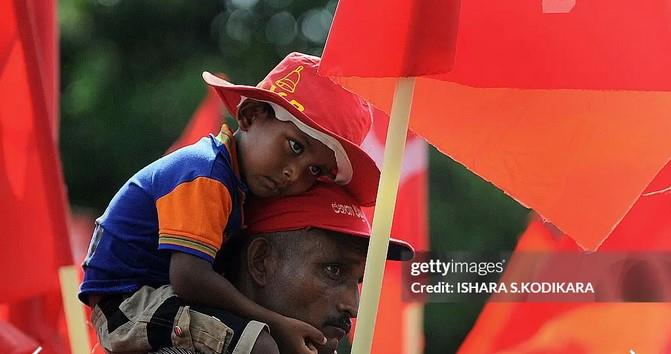
Political Forces And Repolarisation In Sri Lanka
Colombo, September 27: The ardent desire of the people of Sri Lanka for a change became evident from the phenomenal rise of Janatha Vimukthi Peramuna (JVP) led National People's Power (NPP) from a 'mere 3% to near 50%' at the polling last Saturday enabling Anura Kumara Dissanayake to become the President.
At the same time in the recent Sri Lankan General Elections, there have been significant shifts in political alliances. The landscape has been characterised by realignments among major parties and emerging coalitions, often influenced by economic challenges, ethnic dynamics and public discontent.
ADVERTISEMENTSri Lanka has experienced significant political turmoil in recent years, marked by economic crises, social unrest and a reconfiguration of its political landscape. The phenomenon of repolarisation has become increasingly evident as various political forces respond to changing public sentiments and demands. This repolarisation will be the decisive factor at the forthcoming General Elections slated for 14 November.
Sri Lanka's political landscape has historically been shaped by ethnic tensions, economic disparities and the legacies of colonial rule. United National Party (UNP), was the traditionally major player, in the first General Elections in 1947 and 1952. A breakaway group formed the Sri Lanka Freedom Party (SLFP), which formed the Government in 1956, in alliance with several centrist and leftist parties.
Later, the two parties SLFP and UNP formed alliances with minor parties to face elections until 2015, when ant-SLFP groups formed a new alliance headed by Maithripala Sirisena to defeat President Mahinda Rajapaksa.
That alliance too, developed cracks soon and the Rajapaksas formed the Sri Lanka Podujana Peramuna (SLPP) to capture power in 2019. When the Rajapaksas were forced to leave midterm in 2022, another alliance headed by Ranil Wickremesinghe was formed.
The ousted group rallied around Opposition Leader Sajith Premadasa who formed a new alliance, Samagi Jana Balawegaya (SJB).
Now, there are three main alliances, NPP, SJB and UNFP, which were formed two months ago under the leadership of the then Prime Minister Dinesh Gunawardena. These alliances have focused on uniting various factions, including former UNP, SLFP and SLPP members, to challenge the newest powerful alliance NPP which runs the government now.
The civil conflict, which lasted from 1983 to 2009, further entrenched divisions, particularly between the Sinhalese majority and the Tamil minority. The end of the civil war saw the emergence of various political factions, each vying for power and influence.
The economic crisis that escalated in 2022 acted as a catalyst for political change. A combination of mismanagement, the Covid-19 pandemic and external debts led to shortages of essential goods, soaring inflation and widespread protests. The public's disillusionment with traditional political parties has opened the door for new political movements and alliances.
The SLPP, led by the Rajapaksa family, dominated the political scene for years. However, the public's anger over economic mismanagement has severely diminished their support, leading to calls for accountability and reform.
The youth-led protests that erupted in 2022 have given rise to new political movements, advocating for transparency, environmental sustainability and grassroots participation. These movements reflect a shift away from traditional party politics and highlight the need for a more inclusive political discourse.
The NPP has gained traction by capitalising on public discontent. Their platform emphasises governance reform, economic recovery and social justice, resonating with a populace eager for change.
Parties representing ethnic minorities, particularly the Tamil National Alliance (TNA) and the Muslim parties, continue to assert their demands for autonomy and equal rights. The current political climate presents both challenges and opportunities for these groups to redefine their roles in a repolarised landscape.
The widespread protests and demands for systemic change indicate a significant shift in public sentiment. Citizens are increasingly prioritising issues such as corruption, governance, and economic stability over traditional party loyalties.
The rise of social media has played a crucial role in mobilising public opinion and facilitating grassroots movements. Digital platforms have allowed for the rapid dissemination of information and fostered a sense of community among diverse groups.
Sri Lanka's geopolitical positioning has attracted the attention of foreign powers, particularly the US, India and China. Their involvement in Sri Lankan politics can influence domestic alignments and further complicate the repolarisation process.
The repolarisation of Sri Lankan politics presents both opportunities and challenges. On one hand, it offers a chance for genuine reform and a more representative political system. On the other hand, the fragmentation of political forces could lead to instability and conflicts among competing factions.
As new political alliances form and old ones dissolve, the need for dialogue and compromise will be crucial. The future stability of Sri Lanka will depend on its ability to address the underlying issues of governance, economic disparity, and social cohesion.
The political forces in Sri Lanka are undergoing a significant transformation as the nation grapples with its complex realities. Repolarisation reflects a broader desire for change among the populace and a rejection of the status quo. Understanding these dynamics is essential for anyone looking to grasp the future trajectory of Sri Lankan politics and its impact on the region. These alliances reflect a strategic approach to address economic issues and public dissatisfaction, with parties navigating the complexities of Sri Lankan politics to secure electoral success.
The forthcoming parliamentary election will be critical as the nation navigates its path forward amidst the challenges and opportunities that lie ahead. The evolving landscape suggests that the 14 November Election will likely see continued shifts as parties respond to changing voter sentiments.
END

Legal Disclaimer:
MENAFN provides the
information “as is” without warranty of any kind. We do not accept
any responsibility or liability for the accuracy, content, images,
videos, licenses, completeness, legality, or reliability of the information
contained in this article. If you have any complaints or copyright
issues related to this article, kindly contact the provider above.















Comments
No comment